Catalogue of special features for recently released maize hybrids of ICAR-IIMR.
 DMRH1301
DMRH1301
Parent: BML6 × IML418-1
Year of release: 2017
Gazette Notification: S.O.399(E)S.N.17
Season: Rabi
Yield: 9.0-10.0t/ha
Maturity: Medium (125-145days)
Recommended for cultivation in: Eastern UP, Bihar, Jharkhand, West Bengal, Odisha, Rajasthan, Gujarat, Chhattisgarh and Madhya Pradesh.
Special features: Medium maturing (Rabi: 125-145 days), yellow grain colour, high yielding female line, tolerant to Turcicum leaf blight and charcoal rot diseases of maize, responsive to high inputs.
 DMRH1308
DMRH1308
Parent: BML6 × HKI163
Year of release: 2017
Gazette Notification: S.O.399(E)S.N.19
Season: Rabi
Yield: 9.5-10.5t/ha
Maturity: Medium (130-150 days)
Recommended for cultivation in: Bihar, Rajasthan, Gujarat, Chhattisgarh and Madhya Pradesh.
Special features: Medium maturing (Rabi: 130-150 days), attractive yellow grain colour, high yielding female line, tolerant to Turcicum leaf blight and charcoal rot diseases of maize, responsive to high inputs.
 DMRH1305
DMRH1305
Parent: V373 × HKI1105
Year of release: 2018
Gazette Notification: S.O. 6318(E)S.N.40
Season: Kharif
Yield: 6.0-6.5t/ha
Maturity: Early (80-85days; in hill, 95-100days)
Recommended for cultivation in: Jammu & Kashmir, Himachal Pradesh, Uttarakhand (Hill region), Meghalaya, Sikkim, Assam, Tripura, Nagaland, Manipur and Arunachal Pradesh.
Special features: Short duration (80-85 days), attractive orange grain colour, high yielding female line, tolerant to Turcicum leaf blight, maydis leaf blight, curvularia leaf spot, and Banded leaf and sheath blight diseases, due to short duration it can be fit in many cropping system, responsive to high inputs.
 IMHB1539
IMHB1539
Parent: HKI 1105 × IML 127-1
Year of release: 2018
Gazette Notification: S.O. 6318(E)S.N.42
Season: Kharif
Yield: 1.3-1.5t/ha (De-husked baby corn)
Maturity: Early (50-55 days baby corn crop)
Recommended for cultivation in: Jammu & Kashmir, Himachal Pradesh, Uttarakhand (Hill region), Meghalaya, Sikkim, Assam, Tripura, Nagaland, Manipur and Arunachal Pradesh.
Special features: Short duration (50-55 days baby corn crop), attractive creamy colour baby corn, prolific, high yielding female line, tolerant to Turcicum leaf blight, maydis leaf blight, charcoal rot and Banded leaf and sheath blight diseases, due to short duration it can be fit in many cropping system.
 IMHB1532
IMHB1532
Parent: IML 127-1 × IML 242-1
Year of release: 2018
Gazette Notification: S.O. 6318(E)S.N.41
Season: Kharif
Yield: 1.5-2.0t/ha (De-husked baby corn)
Maturity: Medium (55-60 days baby corn crop)
Recommended for cultivation in: Punjab, Haryana, Delhi, Uttarakhand, U.P. (Western region), Rajasthan, Gujarat, Madhya Pradesh &Chhattisgarh
Special features: Medium duration (55-60 days baby corn crop), attractive creamy colour baby corn, prolific, high yielding female line, tolerant to curvularia leaf spot and charcoal rot diseases.
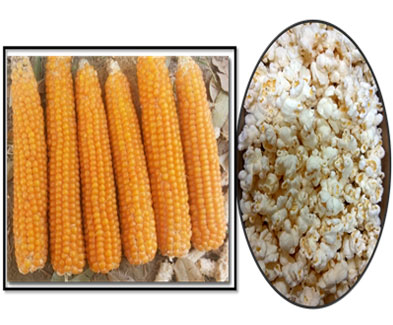 DMRHP1402
DMRHP1402
Parent: JP8 × Dpcl117
Year of release: 2017
Gazette Notification: S.O.399(E)S.N.18
Season: Kharif, but also suitable for rabi
Yield: 3.0-3.5t/ha in kharif; 4.5-5.0t/ha in rabi (Popcorn)
Maturity: Early (75-80 days in kharif)
Recommended for cultivation in: Punjab, Haryana, Delhi, Uttarakhand, U.P. (Western region), Rajasthan, Gujarat, Madhya Pradesh &Chhattisgarh
Special features: India’s first early maturing popcorn hybrid (75-80 days), attractive grain colour with high popping percentage (>90-95%), high yielding, tolerant to charcoal rot and fusarium stalk rot diseases, responsive to high inputs, due to short duration it can be fit in many cropping system.
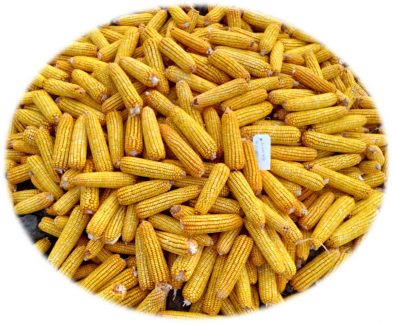 LQMH1 (IMHQPM1530)
LQMH1 (IMHQPM1530)
Type of corn: Quality Protein Maize (QPM)
Parent: IML-343-1× HKI 163
Year of release: 2020
Gazette Notification: Gazette Notification Details : S.O. 3482 (E)S.N.38, Dated 7th October, 2020
Season: Kharif
Yield: 7.5-8.0 t/ha
Maturity: Early (100 days in NHZ; 80-85 Days in others)
Recommended for cultivation in: Northern Hill Zone (NHZ) comprising the states of Jammu & Kashmir, Himachal Pradesh, Uttarakhand, Meghalaya, Sikkim, Assam, Tripura, Nagaland, Manipur, Arunachal Pradesh
Reaction to major diseases and insects: Tolerant to Chilo partellus insect, Turcicum leaf blight and Banded leaf and sheath blight diseases
Special features: Early maturity single cross hybrid shown significant yield superiority (22.4 %) over the relevant best check in Northern Hill Zone during three years of testing in AICRP trials of maize. It exhibited high Tryptophan (0.75-0.80%) and Lysine content (3.0-3.5%) in endospermic protein. This hybrid is responsive to high inputs, due to short duration it can be fit better in any maize based cropping system.
 LPCH 3 (IMHP1540)
LPCH 3 (IMHP1540)

Type of corn: Popcorn
Parent: Dpcl 15-90 × Dpcl 117
Year of release: 2020
Gazette Notification: Gazette Notification Details : S.O. 3482 (E)S.N.44, Dated 7th October, 2020
Season: Kharif; but also can does well during rabi
Yield: 3.5-4.0 t/ha (in Kharif)
Maturity: Early (80-85 days)
Recommended for cultivation in: Bihar, Jharkhand, Uttar Pradesh, Odisha, West Bengal, Telangana, Andhra Pradesh, Tamilnaidu, Karnataka, Maharashtra, Rajasthan, Madhya Pradesh, Chhattisgarh & Gujarat
Reaction to major diseases and insects: Moderately Resistant (MR) to Charcoal rot, Fusarium stalk rot, Maydis leaf blight and Curvularia leaf spot under artificial epiphytotic conditions at hot spots
Special features: LPCH3 showed significant overall grain yield superiority of 18.1 % over the best check during the three years of testing in AICRP trials. Highest Popping percentage is reported (up to 96.0 %) with a mean of 89.8 % in AICRP trial. It has shown 12.2 % superiority in Poppiness to the best check in AICRP trials. The highest Popping expansion (PE) is reported up to 1:20 in AICRP trial with mean of 1: 14.6 in the AICRP testing.
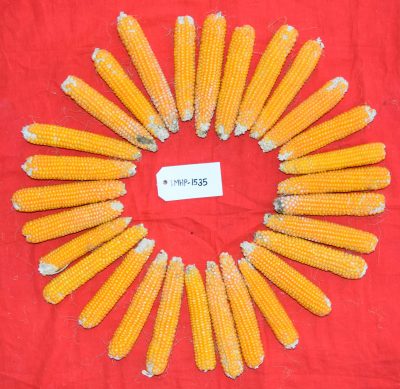 LPCH 2 (IMHP1535)
LPCH 2 (IMHP1535)

Type of corn: Popcorn
Parent: JP-8 × Dpcl 292
Year of release: 2020
Gazette Notification: Gazette Notification Details : S.O. 3482 (E)S.N.43, Dated 7th October, 2020
Season: Kharif; but also can does well during rabi
Yield: 3.0 t/ha (in Kharif)
Maturity: Early (80-85 days)
Recommended for cultivation in: Rajasthan, Madhya Pradesh, Chhattisgarh & Gujarat
Reaction to major diseases and insects: Moderately Resistant (MR) to Charcoal rot, Fusarium stalk rot and Curvularia leaf spot under artificial epiphytotic conditions at hot spots.
Special features: LPCH2 showed significant overall grain yield superiority of 15.9% over the best check during the three years of testing in AICRP trials. Highest Popping percentage is reported (up to 95 %) with a mean of 86.1 in AICRP trial. It has shown 7.6% superiority in Poppiness to the best check in AICRP trials. The highest Popping expansion (PE) is reported up to 1:23 in AICRP trial with mean of 1: 16.6 in the AICRP testing.
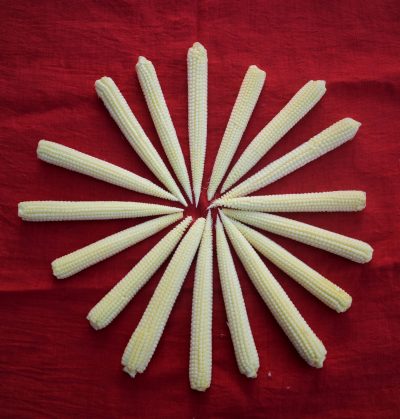 LBCH3 (DMRHB1305)
LBCH3 (DMRHB1305)
Type of corn: Baby corn
Parent: V 373 × HKI 1105
Year of release: 2020
Gazette Notification: Gazette Notification Details : S.O. 3482 (E)S.N.37, Dated 7th October, 2020
Season: Kharif
Yield: 1.3 t/ha (de-husked baby corn)
Maturity: Early
Recommended for cultivation in: J&K, Himachal Pradesh, Uttarakhand, Meghalaya, Sikkim, Assam, Tripura, Nagaland, Manipur, Arunachal Pradesh
Reaction to major diseases and insects: Moderately resistant (MR) to multiple diseases viz., turcicum leaf blight, maydis leaf blight, and banded leaf and sheath blight under artificial epiphytotic conditions at hot-spots locations
Special features: This hybrid has shown significant baby corn yield superiority (14.3%) over the best check over three years of testing in AICRP trials of NHZ; Responsive to high inputs. Length of baby corn is 9.6-11.6 cm and fodder yield of 17.0-21.0 t/ha in the recommended zone.
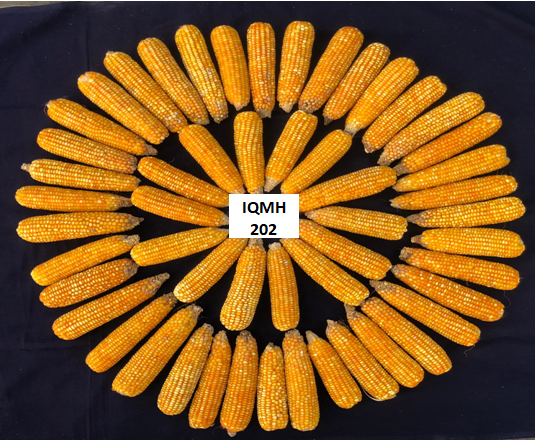 IQMH202 (IIMRQPMH 1601)
IQMH202 (IIMRQPMH 1601)
Type of corn : Quality Protein Maize (QPM)
Parentage: DQL 2209 × DMRQPM 106
Year of release (CSC on CSN & RVAC): 2020, (Dated Nov.9, 2020)
Gazette Notification Details: S.O. 500(E) MoA & FW dated 29th January 2021
Yield (t/ha): 7.2-8.0t/ha in the recommended ecology
Season: Kharif Season
Maturity Group: Early (96 days in NWPZ during Kharif)
Recommended for cultivation in: Punjab, Haryana, Delhi, Uttarakhand Plain, and Western Uttar Pradesh
Reaction to major diseases and insects: The hybrid has shown resistant reaction to Maydis Leaf Blight and moderately resistant reaction to Chilo partellus
Other remarks: Medium maturity single cross hybrid shown significant yield superiority (13.35%) over the relevant best check in North Western Plain Zone during three years of testing in AICRP trials of maize. It exhibited high Tryptophan (0.66%) and Lysine content (3.05%) in endospermic protein. This hybrid responds to high inputs, due to medium duration it can be fit better in any maize-based cropping system.
 IQMH 203 (IIMRQPMH-1705)
IQMH 203 (IIMRQPMH-1705)
Type of corn: Quality Protein Maize (QPM)
Parent: DQL 2209 × DMRQPM 106
Year of release: 2020, (Dated Nov.9, 2020)
Gazette Notification: S.O. 500(E) MoA&FW dated 29th January 2021
Season: Kharif
Yield: 6.3
Maturity: Medium (89 days)
Recommended for cultivation in: Central Western Zone comprising states Rajasthan, Madhya Pradesh, Chhattisgarh & Gujarat
Reaction to major diseases and insects: IQMH 203 (IIMRQPMH-1705) has shown Resistance to Fusarium stalk rot and moderately resistant to Rajasthan Downy Mildew, Curvularia Leaf Spot and Chilo partellus under artificial epiphytotic conditions at hot spots.
Special features: IQMH 203 (IIMRQPMH-1705) medium maturity single cross hybrid shown significant yield superiority (29.0, 35.7 and 28.0 %) over the relevant best checks in Central Western Zone during three years of testing in AICRP trials of maize. It exhibited high Tryptophan (0.77 %) and Lysine content (3.48 %) in endospermic protein. This hybrid is responsive to high inputs, due to medium duration it can be fit better in maize based cropping system.
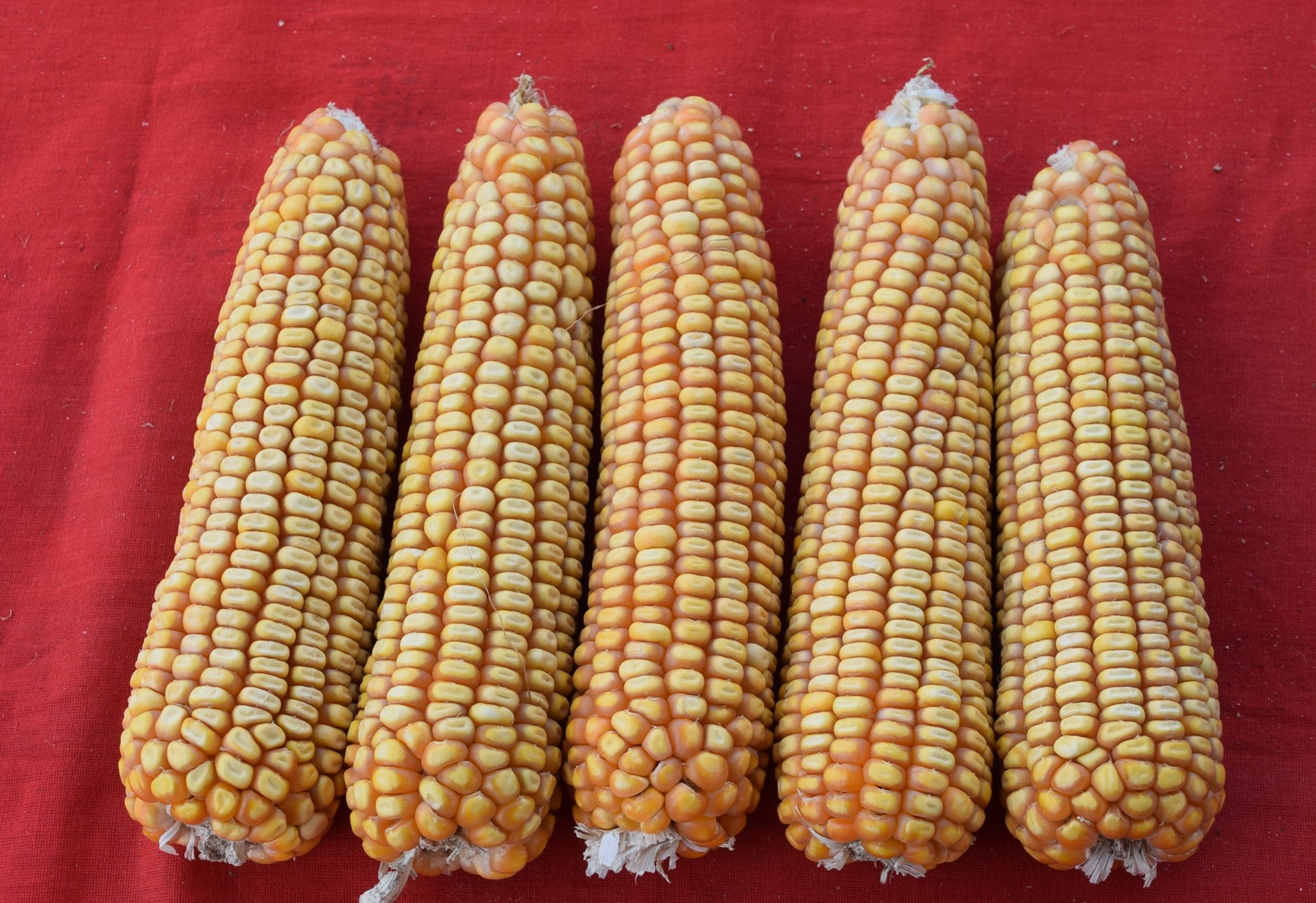 PMH1-LP(low phytic)
PMH1-LP(low phytic)
Parent: LM 13-LP3 × LM 14-LP4
Year of release: 2022
Gazette Notification: S.O. 4065(E). S.N. 70
Season: Kharif
Yield: 9.0 to 10.0 t/ha
Maturity: Long (95-100days)
Recommended for cultivation in: North Western Plains Zone (NWPZ) comprising the states of Punjab, Haryana, Uttar Pradesh (Western region), Uttarakhand (Plains) and Delhi.
Special features: PMH1-LP, an improved version of PMH 1 for one of the major anti-nutritional factor phytic acid (PA). The PA content in the PMH1-LP is 1.89 mg/g of endosperm, whereas in the original hybrid PMH 1 it was 2.94 mg/g. The PA content in PMH1-LP was reduced by 36%. The inorganic phosphate (Pi) content in PMH1-LP is 0.66 mg/g and in original hybrid PMH 1, it was 0.26 mg/g. The Pi content was increased by 140% in the improved version (PMH1-LP) as compared to original hybrid, PMH 1. PMH1-LP showed moderate resistance (MR) to major diseases of north western plains zone (NWPZ) namely maydis leaf blight (MLB) and charcoal rot (ChR) It also showed similar resistance (R) reaction as that of original hybrid PMH 1 to ear damage by fall armyworm, Spodoptera frugiperda (J.E. Smith) and moderately resistance (MR) to leaf injury by Chilo partellus (Swinhoe) and fall armyworm, Spodoptera frugiperda (J.E. Smith) with the disease score of 2.6, 5.7, and 4.4, respectively
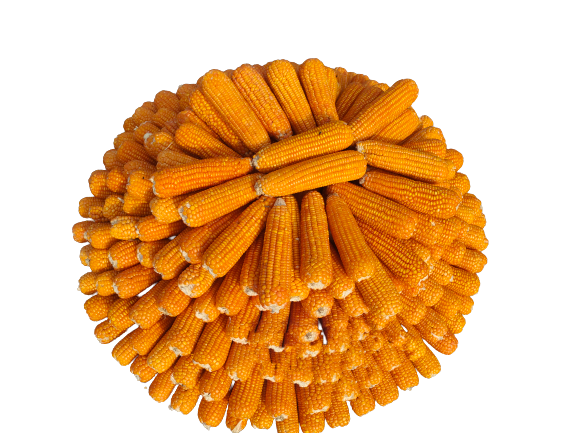 IMH 222
IMH 222
Parent: IML 14 X BML 7
Year of release: 2022
Gazette Notification: S.O. 4065 (E) Sl. No. 71 Dated 31st August, 2022
Season: Rabi
Yield: 10.19 t/ha
Maturity: Medium
Recommended for cultivation in: Punjab, Haryana, Plains of Uttarakhand, Western UP and Delhi
Special features: The variety has shown significant yield superiority (17.53%) over the relevant best check in North Western Plains Zone. This hybrid is moderately resistant to Chilo partellus insect, Charcoal rot, Turcicum leaf blight, resistant to Maydis leaf blight and Fusarium stalk rot (FSR) diseases. This hybrid is responsive to high inputs.
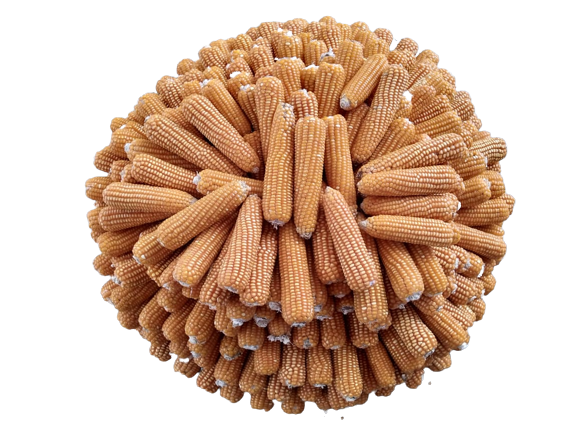 IMH 223
IMH 223
Parent: IML 15 X BML 7
Year of release: 2022
Gazette Notification: S.O. 4065 (E) Sl. No. 72 Dated 31st August, 2022
Season: Rabi
Yield: 10.48 t/ha
Maturity: Medium
Recommended for cultivation in: Punjab, Haryana, Plains of Uttarakhand, Western UP and Delhi
Special features: The hybrid has shown significant yield superiority (20.89%) over the relevant best check in North Western Plains Zone. This hybrid is moderately resistant to Chilo partellus insect, Charcoal rot, Turcicum leaf blight, resistant to Maydis leaf blight and Fusarium stalk rot (FSR) diseases. This hybrid is responsive to high inputs.
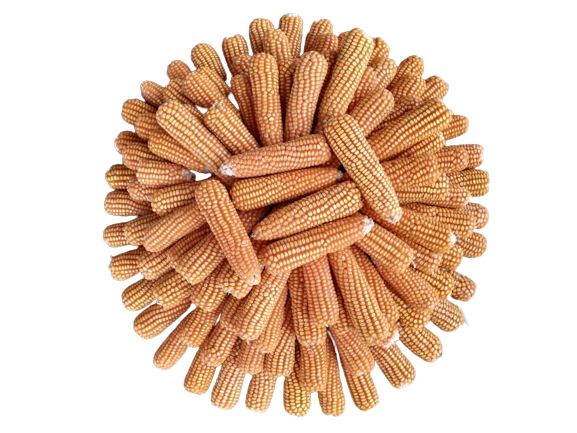 IMH 224
IMH 224
Parent:IML 22 X IML 16
Year of release: 2022
Gazette Notification: S.O. 4065 (E) Sl. No. 73 Dated 31st August, 2022
Season: kharif
Yield: 7.23 t/ha
Maturity: Medium
Recommended for cultivation in: Eastern UP, Bihar, Jharkhand and Orissa
Special features: The hybrid has shown significant yield superiority (13.49%) over the relevant best check in North Eastern Plains Zone. This hybrid is moderately resistant to Chilo partellus insect, Maydis leaf blight, Turcicum leaf blight, Charcoal rot, resistant to Fusarium stalk rot (FSR) diseases. This hybrid is responsive to high inputs.

